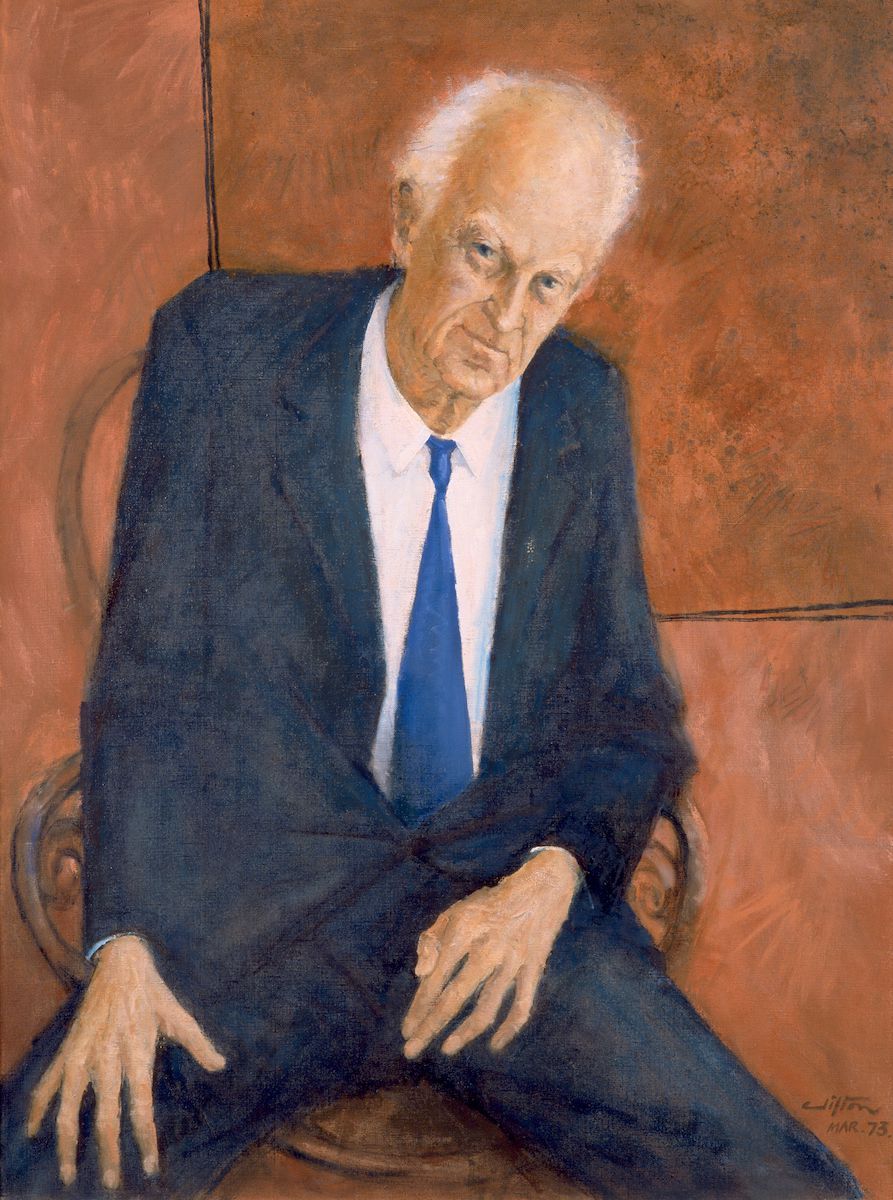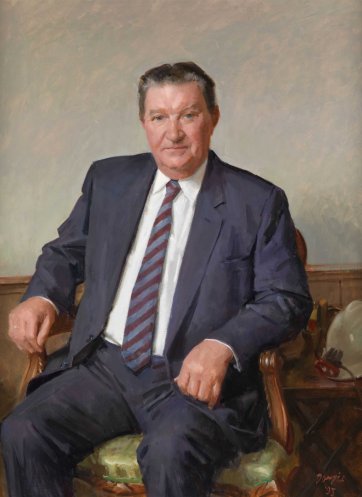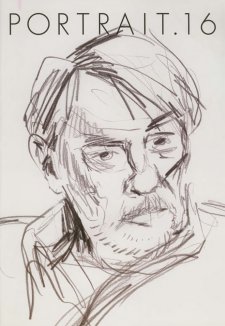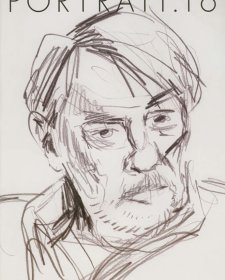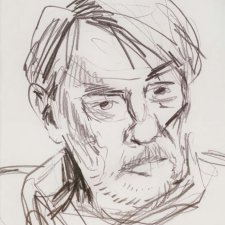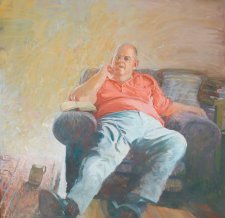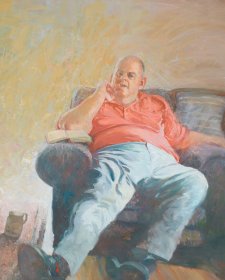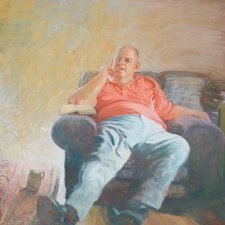Depicting the mining company's first three chairmen, the works by three popular portraitists extend the ongoing representation of Australian corporate history in the gallery, augmenting gifts by Coles/Myer Ltd, the Fairfax family, the National Australia Bank and BHP Billiton.
Alcoa's first chairman, Sir Gordon Lindesay Clark AC KBE CMG MC (1896-1986), was one of Australia's great mining visionaries. Clark was born in Melbourne, while his father was manager of the Mt Lyell mine in Tasmania. Until he was 12, he lived at various Tasmanian mines. He gained a science degree before enlisting in the AIF in 1916, serving in Franceand Ypres to win the Military Cross in 1918. In 1920 he completed a mining engineering degreein Melbourne, and soon became Assistant Metallurgist at the Cockle Creek lead smelter. While lecturing in mining for ten years at the University of Melbourne, he worked alongside his father in the State Electricity Commission and as a consulting engineer in Central Australia and Papua New Guinea, travelling by horseback and sea and camping in crude bush dwellings. During the World War II, Clark was Deputy Controller of Mineral Production, and oversaw the establishment of many new ventures in King Island, Western Australiaand the Northern Territory.
After the war, when he expanded Western Mining Corporation's interests throughout WA and Victoria, he became chairman of WMC and its subsidiaries. In 1956 he became chairman of Broken Hill South, overseeing significant diversification of the company. Through the 1950s he steered WMC, too, into new mineral enterprises that led to the establishment of Alcoa of Australia in 1961; he remained its founder chairman until 1970. He retired from most of his directorships at the age of 78, but remained on the board of WMC until he was 82. Through his lifelong involvement in the mining business, extending to its institutes, associations and councils, Clark earned enormous respect from his colleagues and employees. He received a plethora of mining and metallurgy awards and several honorary doctorates as well as his imperial and Australian honours. His memoir, Built on Gold, was published in 1983.
Alcoa's second chairman, barrister Sir James Forrest (1905-1990), took a very different career path from Clark's. Forrest began his career in the Melbourne law firm of Hedderwick Fookes and Alston, becoming a partner with the firm in 1933 and gaining a reputation as a promising commercial lawyer. After the war, during which he served in the Department of Aircraft Production, he returned to his legal career. In 1950 he joined the board of Australian Glass Manufacturers, and became its chairman three years later. Soon after, he became involved with the branch and principal boards of AMP, of which he was chairman and director respectively until 1977. During the same period he was a longstanding chairman of the boards of the National Bank of Australasiaand Chase-NBA. In 1970 he was invited to join the boards of Western Mining Corporation and Alcoa of Australia, the latter as chairman. He remained a director of Western Mining until 1977 and was chairman of Alcoa until 1978.
Aside from his services to mining, Forrest was a foundation member of the Council of Monash University, on which he served from 1961 to 1971. He was a member of the state and federal councils of the Scout Association for 24 years and served on the Board of the Royal Children's Hospital Research Foundation for 18 years. In 1970, electing to concentrate on his corporate career, he retired from Hedderwick Fookes and Alston after 47 years with the firm, but he attained his 50th anniversary there as a consultant.
Sir Arvi Parbo AC (b. 1926) succeeded Forrest as chairman of Alcoa of Australia in 1978. Parbo came to Australia from Estonia in 1949. He gained a first class honours degree in engineering in Adelaide, and began work as an underground surveyor and technical assistant in Bullfinch, WA. Almost immediately he began the remarkable career rise that culminated in his chairmanship of Western Mining Corporation from 1974 to 1999, Alcoa from 1978 to 1996, and BHP from 1989 to 1992. He has also served as chairman of Munich Reinsurance Company and Zurich Australian Insurance Group, and a director of the Aluminium Company of America, Hoechst Australian Investments, Chase AMP Bank and Sara Lee Corporation. He has received national honours from Japan and the Federal Republic of Germany as well as Australia and Estonia. His contribution to the nickel and aluminium industries in Australia has brought him a great number of awards and no fewer than six honorary doctorates.
The Alcoa gift, like the gift of portraits of chairmen of mining company BHP Billiton, shows that a company can thrive under the guidance of very different chairmen, bringing different areas of expertise to bear on its affairs. More than that, it shows that a collection of portraits of men in suits is not to be hurried past, or surveyed with preconceptions, for it can yield a multiplicity of stories and diverse experiences to interest the attentive viewer.
